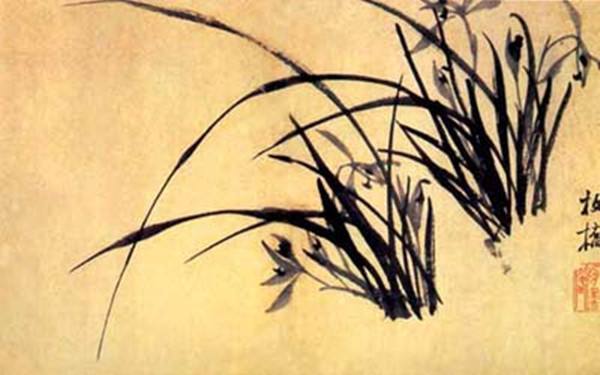Zheng Xie An eccentric painter who’s‘occasionally muddle-headed’
3 min readLasting words of odd painter Zheng Xie,better known by his courtesy name Zheng Banqiao,was an exceptionally gifted painter,calligrapher and poet during the Qing Dynasty(1616-1911).Today,he remains a household name among Chinese speakers around the world thanks to the great popular-ity of his unorthodox paintings,calligraphy and poems as well as the widespread legends about his life.
When you visit a home or office in China,more often than not you are likely to see a framed Chinese calligraphy of four big Chinese characters:(Nan De Hu Tu),which literally means“to be occasionally muddle-minded.”
It’s usually a copy of the inscription written by Zheng Banqiao about 260 years ago in his unique calligraphic style featuring bold slanting strokes.
It is said that Zheng wrote the four characters when he was 59, after he quit his post as a county magistrate in today’s Shandong Province in eastern China. He submitted his resig-nation after he was criticized by his superiors for building shelters for the poor and giving out grain from the county barns to victims of severe drought without authorization.

There are probably hundreds of ways to interpret Zheng’s inscription. Some say it means “Where ignorance is bliss, it’s folly to be wise.”Some say it means that one should be toler-ant and conniving when it comes to trivial matters or peccadil-los and others believe it advises people to be “pound wise, penny foolish.”Others say the writing implies Zheng criticizes himself for being too critical about social phenomena and be-ing a perfectionist in executing his official duties.
Today, many people use his “Nan De Hu Tu”as their motto according to their understanding of the master’s writing.
Because of his poor family background, Zheng believed in a clean government and always showed his sympathy for the poor and underprivileged.
One story says that when Zheng was once inspecting a rural market, he saw an old woman in rags weeping over a pile of plain fans that she could not sell.
As Zheng was not only a county official, but also a fa-mous painter, he began to paint the fans for the woman and they started to sell like hot cakes in the market. Before sunset, they were sold out.
A cousin once wrote a letter to him asking for help over a dispute with his neighbor. The cousin said that the neighbor claimed that the wall standing between the two neighbors’ gardens belonged to them, but actually it was built by hisgrandfather. The cousin thought Zheng as an official would have some clout to help him resolve the dispute.
However, Zheng simply replied with a ragged verse, which reads:”Your letter traveled a thousand miles to com-plain about a wall, let the neighbor have the wall and so what.
You see the Great Wall still standing intact today, but where could you find the first emperor who built the wall?”Later, the cousin came to terms with his neighbor and they resolved the dispute between themselves.
After quitting his post, Zheng returned to his hometown in today’s Jiangsu Province and concentrated on painting, cal-ligraphy and poetry.
He was particularly good at painting bamboo, orchid, pine tree, plum bloom and stones. But due to his gonzo artistic style and strong personality, he was named one of the “Eight Eccen-trics of Yangzhou,”a group of painters in the Qing Dynasty who had abandoned traditional ideas and advocated an expres-sive and idiosyncratic style in art.








